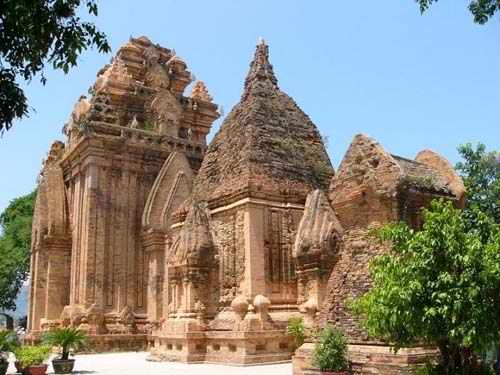Nha Trang: More Than a Beach

Most tourists go to Nha Trang, the south central province of Khanh Hoa, for its beautiful beaches. But more than its sand, sea and sun, Nha Trang has so much more to offer to its visitors that makes it a worthwhile tourist destination.
The giant Po Nagar Temples Complex is one destination in Nha Trang tourists should go to aside from its world-famous beaches. Located just a mere 4 kilometers from the municipal center, it is known as the city's “spiritual heart,” a group of temples which is one of Nha Trang's most important historical sites. It was built in the 8th century by the Cham people in their Cham kingdom and recognized as a Vietnamese national relic in 1979.
According to history, when the Vietnamese people moved south to Nha Trang in the 17th century, they disocvered that Lady Po Nagar, the object of worship of the Cham people, was very similar to their own Mother Goddess. The temples then became a place of worship for both dieties, as well as the unity of different ethnic groups.
The meditation halls of the complex is composed of two lines of five octagonal pillars in the second terrace of the structure. Here, offerings are prepared and rites are performed before the main ritul. Outside, there are 12 smaller pillars which are actually the remains of the main gate leading to the main tower. A steep staircase leads to the upper terrace where the main towers are, standing like watchdogs to the city in its elevated state. There were originally five towers, but one was destroyed, leaving only four. Each tower has a pyramid-shaped interior dediacted to a particular diety. The tallest tower is about 25 meters high in which visitors can enjoy and appreciate nature's beauty of mountains, sky, rivers, sea, and even fishing villages. But what makes the towers even more special is that they were made from the Cham building techniques, which meant that they were built without cement, just stacked on top of the other in a very precise manner. The Cham people used high-quality bricks that were rubbed smooth during construction.
According to the scholar Tran Ky Phuong, the Po Nagar temples were one of the two major sanctuaries of the Champa courts, which also reflected the phenomena of the Champa “cosmological dualist cult.” His study, entitled “Historic Champa States in Vietnam: Champa Origins, Reconfirmed Nomenclatures, and Preservation of Sites” discussed about the typical architectural style of the temples. Phuong's research discovered that Champa temple-towers were built according to a specific pattern: the body of the tower is square; the pyramid-shaped roof has three levels with a sandstone-ridge; and the tower doors open to the east and west.
Head of the provincial Historical Sites Centre Ngo My Chau stated that the Po Nagar Temples Complex welcomed almost 700,000 visitors in 2011 and almost 570,000 in the initial nine months of this year. Today, visitors are treated to an authentic Champa dance and music when the visit the temple, a said to be hypnotic dance called Apsara which is accompanied by fans and ceramic pots when performed. Tourists can also observe the traditional process of brocade weaving and pottery making.
During the yearly celebration of the goddess Yan Po Nagar, people from all over Southern Central Vietnam converge to honor the diety. This includes both the ethnic Chan and Kinh minority people. The festival is a four-day celebration starting from the 20th day of the third month based on the lunar calendar. People celebrate by traditional singing, dancing and worshipping ceremonies. About 70 delegations from all over the region join in the festival annually, with gifts of food, fruits and flowers to the goddess. These offerings run for three sraight days during the festival.
The lantern ceremony is the most awaited part of the whole festival, conducted on the evening of the first day of the festivities. Dressed in traditional costumes and carrying two lanterns each, participants embark on a mass procession parade which starts at the temple down to the banks of the Cai River. There, they place the lanterns on the water, estimated to be about 7,000 each time, creating a beautiful sight of moving lights all across the river.
To complete the festive yet holy celebrations, candles are then offered to pray and honor for the spirits of the soldiers who gave up their lives for their country and the fishermen who lost their lives at the sea.









